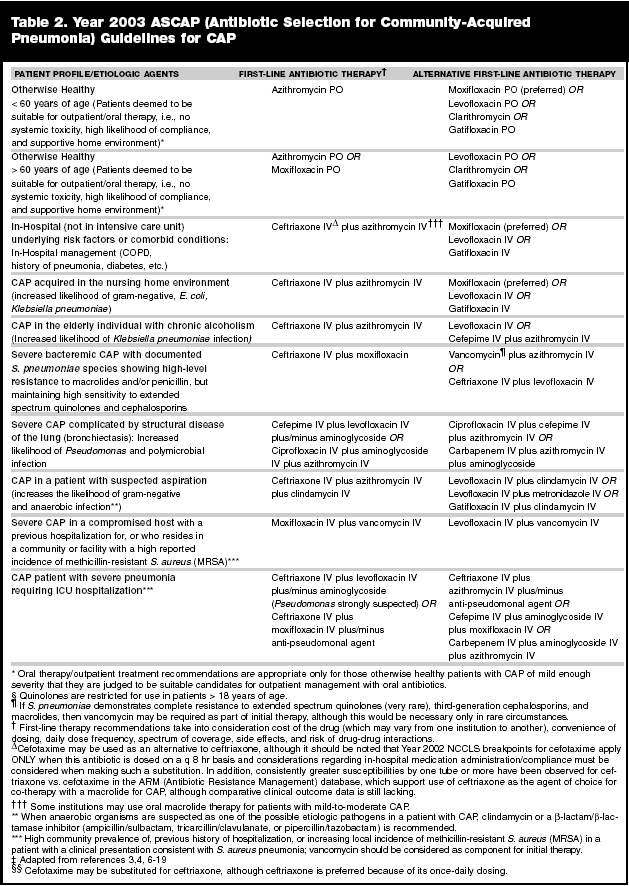PNEUMONIA -Community acquired
Haemophilus influenzae Pneumonia
Antibiotic Rx: REF: DynaMed March 2010
Medications: ampicillin (but 30% beta-lactamase) so consider Augmentin
IV treatment:
oral treatment :
Diagnosis and Treatment of Community-acquired Pneumonia
Patients with pneumonia usually present with cough (more than 90 percent), dyspnea (66 percent), sputum production (66 percent), and pleuritic chest pain (50 percent), although nonrespiratory symptoms can also predominate. Elderly patients may report fewer symptoms. Unfortunately, information obtained from the history or physical examination cannot rule in or rule out the diagnosis of pneumonia with adequate accuracy. All rigorous definitions of pneumonia require the finding of a pulmonary infiltrate on a chest radiograph.
The initial antibiotic regimen should be chosen empirically to cover common typical and atypical pathogens (Table 1). Pneumonia due to atypical organisms (Mycoplasma pneumoniae, legionella species, and Chlamydia pneumoniae) accounts for 20 to 40 percent of cases and cannot be differentiated from cases due to typical bacteria on the basis of the patient's history, the results of the physical examination, or findings on chest radiographs. Two large observational cohort studies found that antibiotic regimens that cover both typical and atypical organisms are associated with a lower risk of death than regimens that cover just typical bacteria. Although rigorous data regarding the duration of therapy are limited, most experts recommend a total of 10 to 14 days. Intravenous therapy with antibiotics that have a high level of oral bioavailability (e.g., fluoroquinolones) may be no better than oral therapy with such antibiotics in patients with uncomplicated infections who have a functioning gastrointestinal tract.
Differential Diagnosis of Community Acquired Pneumonia: Especially in the elderly patient, the signs and symptoms of pneumonia may be mimicked by many disorders, including
REF: 2003 ASCAP (Antibiotic Selection for Community-Acquired Pneumonia) Panel* Consensus Report®

The Pneumonia Severity Index is used to determine a patient's risk of death. The total score is obtained by adding to the patient's age (in years for men or in years – 10 for women) the points assigned for each additional applicable characteristic.
The Pneumonia Severity Index is based on data that are commonly available at presentation and stratifies patients into five risk classes in which 30-day mortality rates range from 0.1 percent to 27.0 percent. The higher the score, the higher the risk of death, admission to the intensive care unit, and readmission and the longer the length of stay. Easy-to-use versions of the index are now available on the Internet (http://ursa.kcom.edu/CAPcalc/default.htm, http://ncemi.org, and http://www.emedhome.com/dbase.cfm )30,31,32 and handheld computers.
Pneumonia - Hospital acquired
05162003